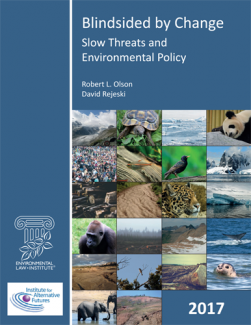
Some threats to the environment, like acid rain and stratospheric ozone depletion, emerged fairly rapidly, and abrupt threats like an oil or toxic chemical spill demand an immediate response. But most environmental problems have the opposite character: they involve slow threats where small, hardly noticeable changes add up over time to produce large impacts. And nearly all of the most serious environmental problems we face--climate change, species extinction, deforestation, soil erosion, and endocrine disruption--involve slow threats. We urgently need a better understanding of why it is so difficult to galvanize attention to slow environmental threats and sustain efforts to deal with them. No single explanation is sufficient. But insights from several different fields – evolutionary psychology and neuroscience, behavioral economics and decision theory, social psychology, journalism and political science – can help us see what we are up against so we can devise better strategies for approaching this class of problems.